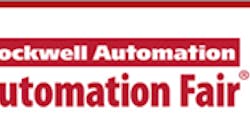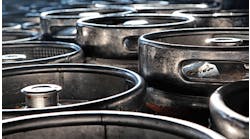Among other things, advanced process control (APC) can improve yield, reduce energy consumption, improve quality and consistency, reduce giveaway, increase safety and improve compliance. The term covers a wide range of technologies including advanced regulatory control (ARC), inferential, sequential and model predictive control (MPC).
“This is about MPC,” said Jim Vortherms, division manager, Interstates Control Systems, Inc. (ICSI) in his presentation at the Rockwell Automation Process Solutions User Group (PSUG) just before the Automation Fair event in Chicago this week. Vortherms co-presented with Randy Kurth, lead control systems analyst, ICSI.
MPC sits on top of the basic process control system (BPCS), where it monitors, collects data, runs models, and feeds setpoints down to the BPCS.
“The calculated return is $162,000 per year on a $125,000 project, or a payback of 9.2 months. We promised an 18-month payback to be sure the client would be satisfied.” Jim Vortherms, division manager, Interstates Control Systems, Inc. (ICSI) described how model predictive control saves money on an oilseed desolventizer/toaster.
“It’s especially applicable to processes with long lag times or where multiple variables affect the process and keep it from running the way you want it to,” Vortherms said. “In this case, we had identified the excessive dome temperature of an oilseed desolventizer/toaster (DT) as an opportunity to save energy.”
Extracting oil from seeds
The DT is a pressurized vessel where oilseed stocks are continuously heated to extract oils (solvent) then removed via a motor-driven extractor. The unit under consideration was fitted with a manual steam valve that was seldom adjusted because of its remote location. The DT was operated at higher than the necessary temperatures—if the dome temperature cooled below 150 °F, it would trip out the process to prevent solvent retention in the product, which could lead to explosions in storage silos.
Vortherms described four steps to implementing MPC. The first is to identify candidate process variables, which is best done by familiarity with the process and equipment. The second is to collect data, preferably as much as is available from lab results and the process historian, as well as operator logs. “Collect any and all data, including cost and revenue information to calculate return on investment (ROI),” he said. “Collect at least six months’ worth of data.”
The third step is to configure a model that takes into account the controlled variables—pressures, temperatures, flows, gearbox amps, etc.—as well as the disturbance variables that affect the process but are not controlled, and the variable(s) to be manipulated by MPC. In the case of the DT, ICSI recommended the manual steam valve be replaced with a control valve, and become the manipulated variable to control dome temperature.
Variables may have upper limits, lower limits or both, and these must be taken into the model along with desired setpoints. “For the DT, we configured a simple model for steam only, and a more complex model that would also manipulate the extractor speed,” Vortherms said. Due to cost and practicality, they settled on the simple model.
The first three steps can be completed remotely in the engineering office. The fourth step is implementation, where MPC is put in place, tuned and monitored.
Model implementation
In a production environment, the MPC runs in a server and interfaces with the PLC that does the actual control. “But we’ll soon be able to run simple models in the new Logix advanced control module,” Vortherms said. The implementation includes a faceplate that operators can access to monitor the status of the MPC.
It shows actual and target process variables, as well as the MPC health status: whether it’s on or off, and if any measurements are deactivated due to a transmitter malfunctioning or out of service for calibration or repair. With the MPC installed and tuned, it was possible to lower the dome temperature from 160 °F to 150 °F, which reduced the steam demand by 1 lb. per bushel.
“At $6 per pound of steam, running 90 bushels a day, 300 days per year, the calculated return is $162,000 per year on a $125,000 project, or a payback of 9.2 months,” Vortherms said. “We promised an 18-month payback to be sure the client would be satisfied.”
In practice, operating the unit reliably at 150 °F also prevents trips and keeps it online, increasing production and improving payback.
The system has been in operation for more than a year with no need for retuning or adjustment. When it is taken offline for a shutdown or startup, or is compromised by a field device failure or maintenance, the operators are eager to get it turned back on.
“Operators really like it so they turn it back on. They see what it does,” Vortherms said. “MPC is like having your best operator looking at all those variables, moving the valve and doing nothing else, 24/7.”




